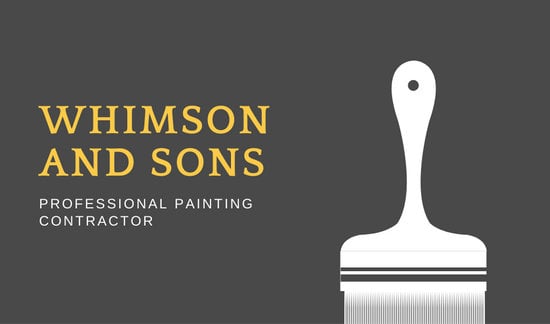Seasonal Factors To Consider For Industrial Outside Painting: What You Required To Know
Seasonal Factors To Consider For Industrial Outside Painting: What You Required To Know
Blog Article
Published By-Doherty Skafte
When you're planning an industrial external paint project, seasonal factors can make or damage your outcomes. You'll want to consider just how temperature and humidity influence paint application and drying out times. Picking the ideal season can guarantee your paint adheres properly and lasts longer. But which seasons are truly the best for this sort of job? Allow's check out the crucial elements that can influence your task's success.
The Impact of Temperature on Paint Application
When you're preparing a commercial exterior paint job, the temperature level can significantly affect how well the paint sticks and dries out.
Ideally, you intend to repaint when temperatures vary in between 50 ° F and 85 ° F. If it's as well cold, the paint might not cure appropriately, causing problems like peeling or breaking.
On the flip side, if it's also hot, the paint can dry too promptly, preventing appropriate adhesion and resulting in an uneven coating.
multi family painters should additionally think about the moment of day; morning or late afternoon offers cooler temperature levels, which can be much more desirable.
Always examine the supplier's suggestions for the specific paint you're utilizing, as they commonly provide advice on the perfect temperature array for ideal outcomes.
Humidity and Its Effect on Drying Times
Temperature isn't the only ecological element that affects your industrial external paint project; humidity plays a substantial duty too. High moisture levels can decrease drying out times considerably, impacting the overall high quality of your paint work.
When the air is saturated with moisture, the paint takes longer to heal, which can cause concerns like inadequate attachment and a greater risk of mold development. If you're repainting on a specifically damp day, be gotten ready for prolonged delay times between layers.
It's crucial to keep track of local climate condition and strategy accordingly. Preferably, go for moisture levels between 40% and 70% for ideal drying out.
Keeping these factors in mind guarantees your task stays on track and supplies an enduring finish.
Best Seasons for Commercial Outside Paint Projects
What's the most effective season for your business outside paint jobs?
Springtime and early fall are normally your best options. During these periods, temperatures are moderate, and moisture levels are frequently reduced, developing ideal problems for paint application and drying.
Avoid summertime's intense heat, which can create paint to dry as well quickly, causing inadequate bond and surface. In a similar way, winter's cool temperatures can hinder proper drying out and healing, taking the chance of the durability of your paint job.
Go for days with temperature levels between 50 ° F and 85 ° F for optimum results. Keep in web link to examine the regional weather forecast for rainfall, as wet conditions can ruin your job.
Planning around these aspects ensures your paint job runs efficiently and lasts much longer.
Verdict
Finally, planning your industrial exterior paint tasks around seasonal considerations can make a considerable distinction in the result. By organizing job during the excellent temperatures and humidity levels, you'll ensure far better bond and drying out times. Keep in mind to watch on local weather report and pick the correct time of year-- spring and very early autumn are your best options. Taking these steps will help you accomplish a resilient and expert surface that lasts.
